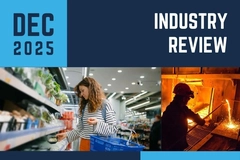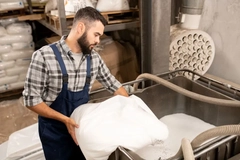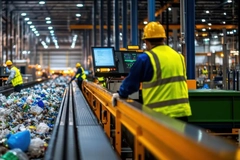Design studio Milk: Business development manager talks alternative material integration through creative design

Packaging design needs to adapt to new materials, according to Eleonore Eisath, lead innovation lab and business development manager at Milk. The challenges inherent to such solutions can often be overcome through new design choices, offering elevated, engaging looks. However, Eisath highlights that new material integration can be challenging, as packaging machinery might not be able to handle alternative materials.
To support packagers in optimizing their portfolio and overcoming these challenges, food packaging agency Milk has introduced a booklet on eco-friendly food packaging materials — an open-source resource designed to drive innovation and environmental sustainability in the packaging industry. The design studio’s recent release, titled MILK. Material Lab Booklet, aims to provide a comprehensive guide compiling insights on environmentally conscious materials and practical solutions.
Packaging Insights sits down with Eisath to discuss the role of creative design in packaging innovation.
“Our goal is to find the right balance between a practical manual and an inspirational booklet. We love to feature bold ideas, such as bioplastics made from mealworm exoskeletons, but we also want packaging engineers and designers to use the glossary, especially the online edition to discover applicable materials,” she says.
“At Milk, our goal is to help our clients analyze their packaging portfolio and its challenges for 2025, optimize it for 2030, and generate out-of-the-box ideas for a sustainable and innovative packaging future.”
Creative design
Eisath tells us that design can help the integration of new materials. “A great example is the translucent paper ‘Glasswing’ by One.Five, which is featured in our booklet. We partnered with the start-up to produce sample pouches and sachets that are see-through and serve as an alternative to plastic solutions. These are not only functional but also visually and tactilely appealing, proving that sustainable packaging can enhance a product’s attractiveness.”
Gaestar’s clay-based cups offer a biodegradable alternative to plastic.“There are many creative ideas in the field, especially when it comes to polymers. In our Material Lab Glossary and booklet, we feature bioplastics made from chicory, fruit waste, potatoes, algae, and eggshells,” Eisath adds.
However, she notes that these solutions often struggle to scale for FMCG packaging. Plus, without the right infrastructure to process bioplastics — especially those needing industrial composting — managing their end-of-life remains a challenge.
“We see the most potential for industry transformation in functional papers. These materials are improving rapidly, are favored by consumers, and are privileged in regulatory discussions.”
Novel material integration challenges
Milk rates packaging materials on a scale from “Concept” to “Series Production Ready.” In the third edition of the booklet, the company also added the “best-in-class” solutions from the big producers in four categories: paper, glass, plastics and biopolymers, and metals.
Eisath shared her personal favorite material example, which is detailed in the booklet and combines convenience and environmental sustainability.
“It is a paper solution called ‘Compostella.’ It is a special type of paper that serves as an alternative to cling film, aluminum foil, baking paper, and wrapping film. Made solely from water, cellulose, and sugar, it is fully home compostable. It is grease-proof, heat-resistant, and can even be moistened and fixed over the edge of a bowl to replace cling film.”Milk thinks in three future timeframes: 2025, 2030, and 2040 and beyond.
Milk sources novel materials from stakeholders worldwide for its material lab. “Our network includes experts who share their latest findings, material producers, and innovative start-ups working on out-of-the-box approaches,” Eisath tells us.
“The biggest challenge for novel material solutions is feasibility and scalability. Most companies struggle to introduce new materials because their machines and processes are highly optimized for conventional materials. Changing infrastructure is often too costly. That’s why it is crucial for start-ups and material providers to prove machine compatibility on standard equipment.”
“We are working on a joint project with the global packaging machine producer Multivac to help new materials overcome this hurdle. We connect the solutions we discover with Multivac, who then tests them on their machines,” she explains.
“The next step in this project is to design a standardized packaging solution with one of these materials and showcase it as proof that alternatives can work.”










